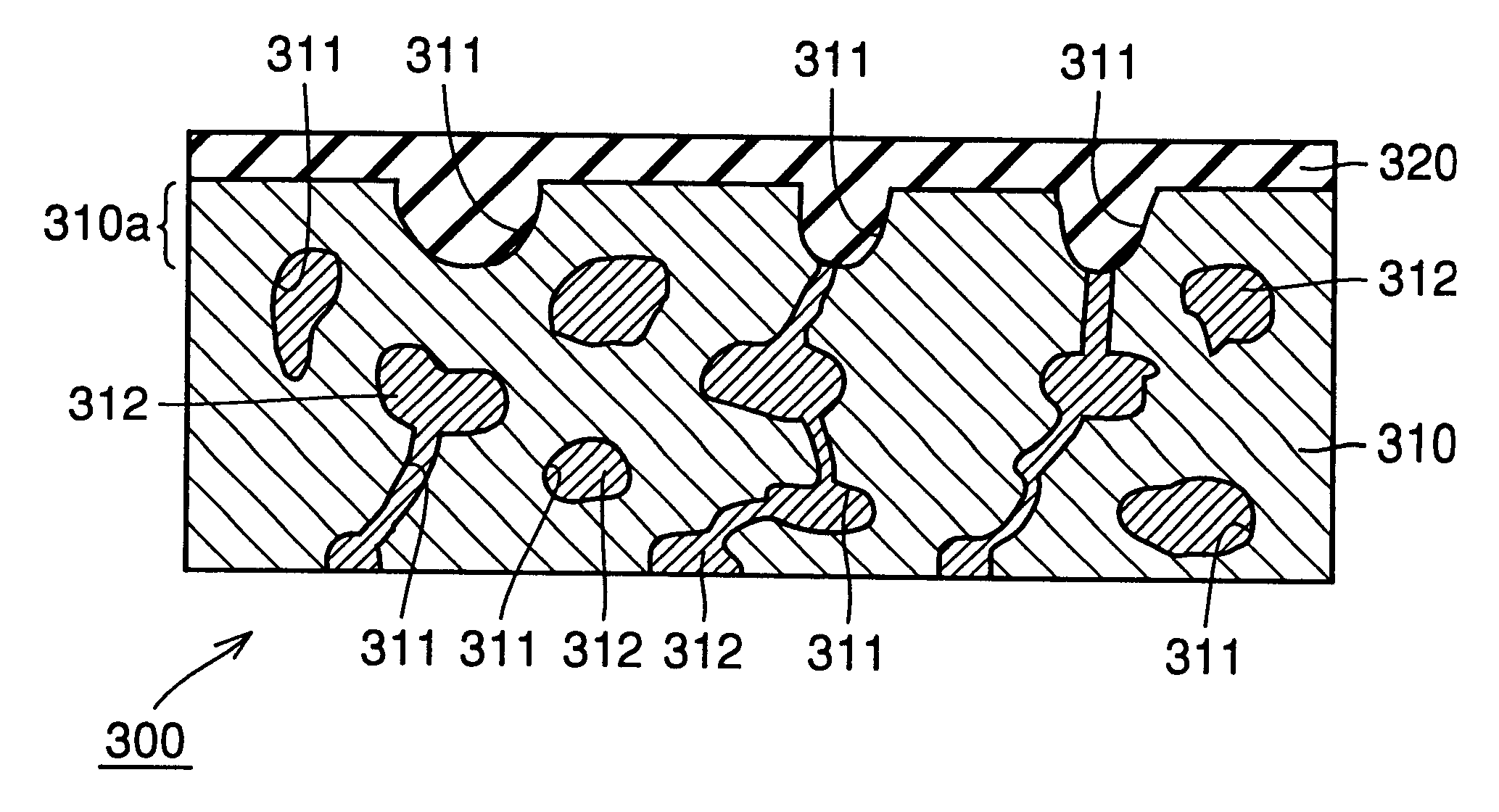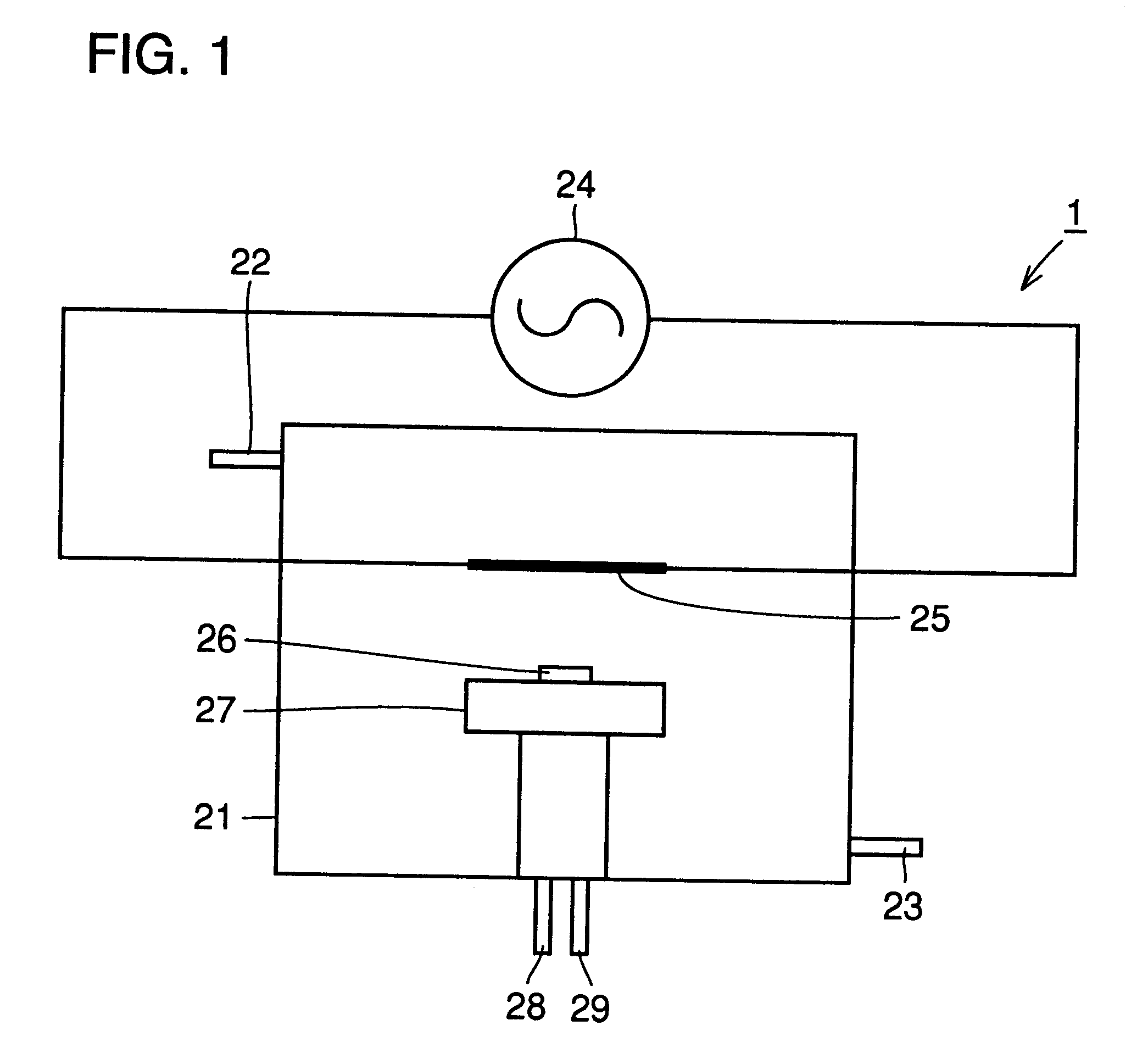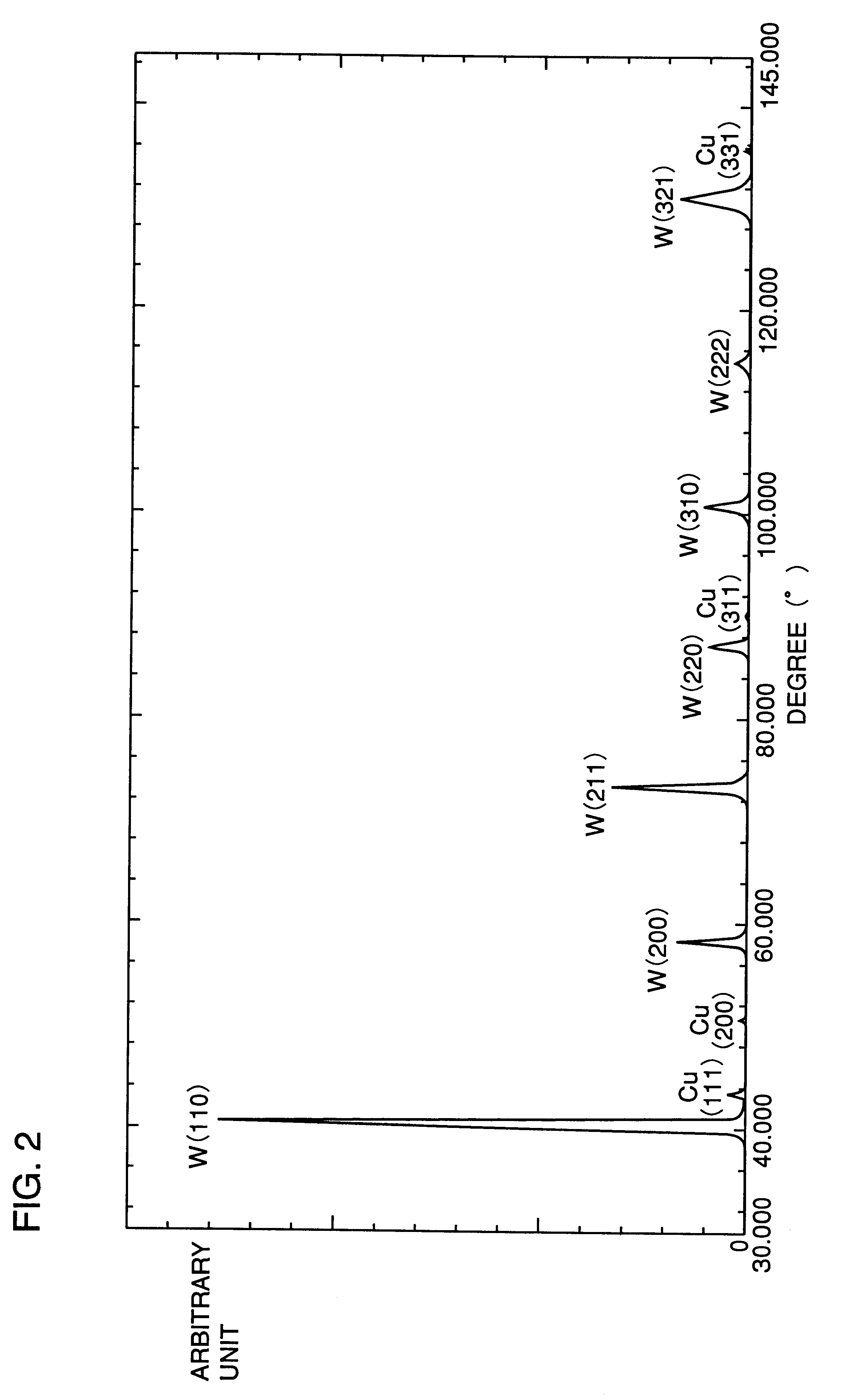Heatsink and fabrication method thereof
a technology of heatsink and fabrication method, which is applied in the field of heatsink and a fabrication method thereof, can solve the problems of preventing proper performance, increasing the cost of the heatsink, and generating a large amount of heat during operation of high-power semiconductor devices, so as to improve the number of contact points between the substrate and the thin diamond film layer, improve the number of diamond film layer adherence, and improve the effect of the nucleus generation density
- Summary
- Abstract
- Description
- Claims
- Application Information
AI Technical Summary
Benefits of technology
Problems solved by technology
Method used
Image
Examples
example 2
A substrate 26 was prepared formed of a Cu--W sintered compact with the Cu content of 15% by weight and 13.5 mm.times.13.5 mm.times.0.635 mm in size (lengthwise.times.breadthwise.times.thickness) as shown in FIG. 17. The surface of substrate 26 was roughened so that the surface roughness R.sub.Z of the substrate was 1 .mu.m. Here, R.sub.Z refers to the ten point height of irregularities defined by JIS (Japanese Industrial Standards).
On the surface subjected to the above roughening process, SiC 32 as shown in FIG. 17 was deposited to 3 .mu.m in thickness as an intermediate layer not including Cu. The surface of the intermediate layer was scratched with diamond abrasive grains. Then, substrate 26 was mounted on substrate holder 27 in hot filament CVD apparatus 1 of FIG. 1. The temperature of tungsten filament 25 was set to approximately 2100.degree. C. Mixture gas of methane and hydrogen with the methane concentration of 1 mole % was introduced into reactor 21 through gas inlet 22. Th...
example 3
FIG. 7 is a schematic diagram showing a microwave plasma CVD apparatus for diamond vapor synthesis employed in the present invention. Microwave plasma CVD apparatus 100 includes a substrate holder 101, a microwave power source 104, a tuner 105, a wave guide 106, a reactor 107, an outlet 108, an inlet 109, and a plunger 110.
Substrate holder 101 for supporting a substrate is provided within reactor 107. Reactor 107 includes inlet 109 from which material gas is introduced and outlet 108 from which the material gas or gas generated by the reaction is output. Outlet 108 is connected to a vacuum pump. Microwave power source 104, an isolator (not shown) and a tuner 105 form the microwave generation unit. Reactor 107 is formed of a quartz tube.
The microwave generated from the microwave generation unit is directed towards plunger 110 via wave guide 106. Since reactor 107 is provided in the passage of wave guide 106, plasma is generated within reactor 107 as indicated by the circled dotted li...
example 4
A porous body of 10 mm.times.10 mm.times.0.3 mm (lengthwise.times.breadthwise.times.thickness) in size was prepared, formed of a W sintered compact with the porosity of 27.5% by volume. Cu was permeated into the hole of the porous body. Accordingly, the entire Cu content of the substrate was set to 10% by weight, and the Cu content at the region of 10 .mu.m in depth from the surface where a thin diamond film layer is to be formed was set to 3% by weight.
The surface of the substrate was subjected to a scratching process using diamond abrasive grains. Substrate 102 was mounted on substrate holder 101 in microwave plasma CVD apparatus 100 shown in FIG. 7. The temperature of substrate 102 was set to 850.degree. C. Mixture gas of methane and hydrogen with the methane concentration of 3.5 mole % was introduced into reactor 107 through inlet 109. The pressure in reactor 107 was set to 140 Torr. A thin diamond film layer was grown on substrate 102 over 20 hours. The thin diamond film layer ...
PUM
| Property | Measurement | Unit |
|---|---|---|
| Fraction | aaaaa | aaaaa |
| Percent by mass | aaaaa | aaaaa |
| Percent by mass | aaaaa | aaaaa |
Abstract
Description
Claims
Application Information
 Login to View More
Login to View More - R&D Engineer
- R&D Manager
- IP Professional
- Industry Leading Data Capabilities
- Powerful AI technology
- Patent DNA Extraction
Browse by: Latest US Patents, China's latest patents, Technical Efficacy Thesaurus, Application Domain, Technology Topic, Popular Technical Reports.
© 2024 PatSnap. All rights reserved.Legal|Privacy policy|Modern Slavery Act Transparency Statement|Sitemap|About US| Contact US: help@patsnap.com










